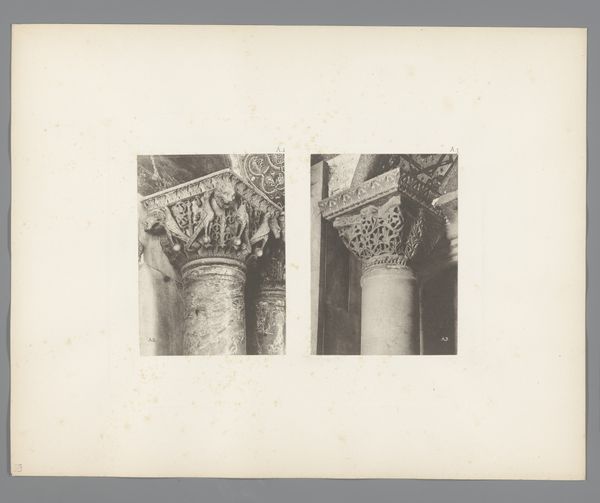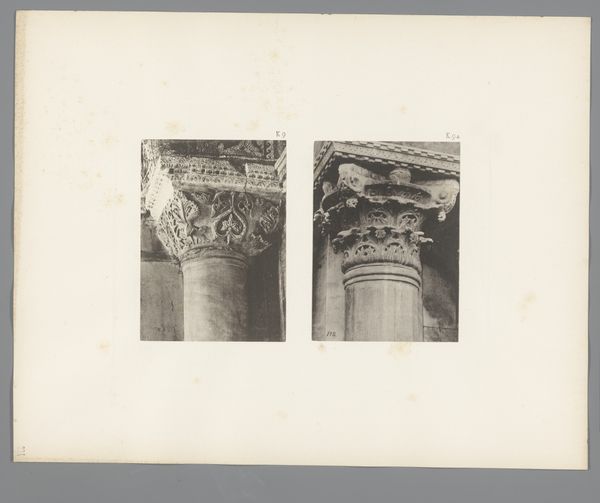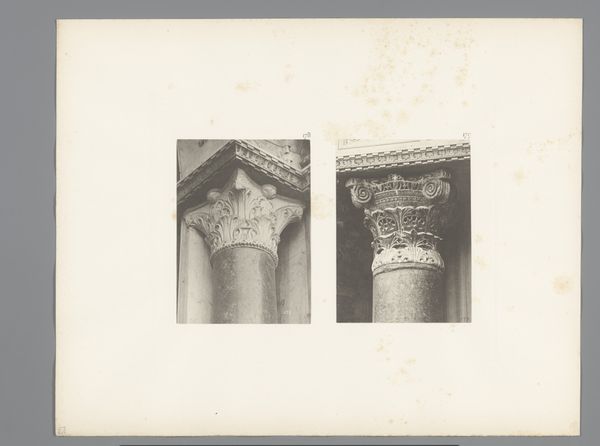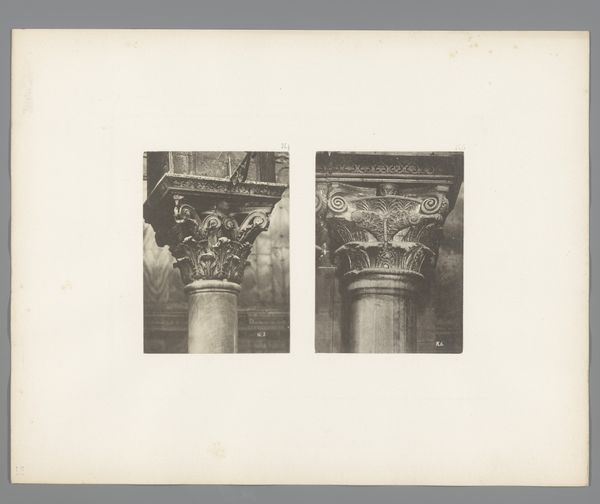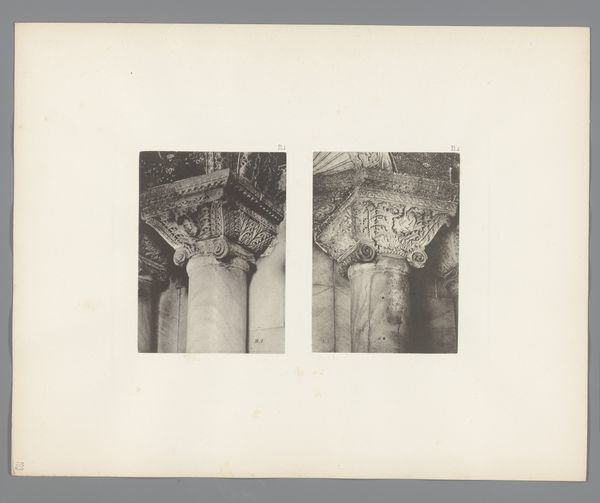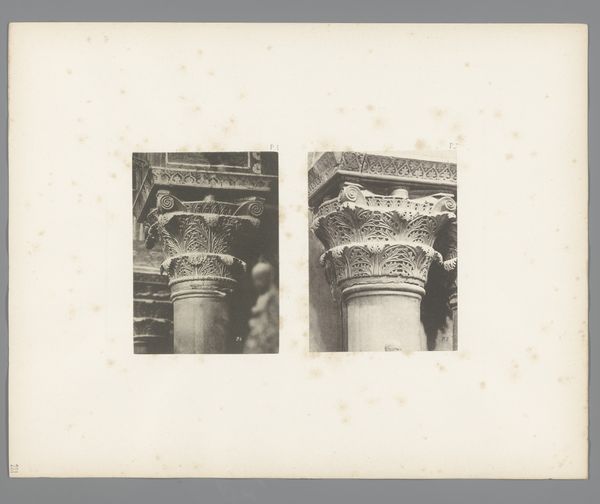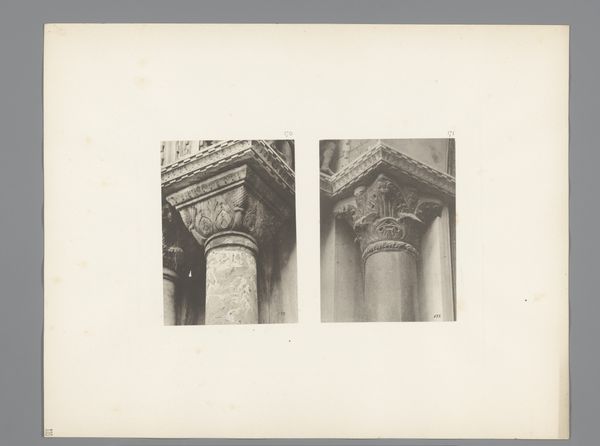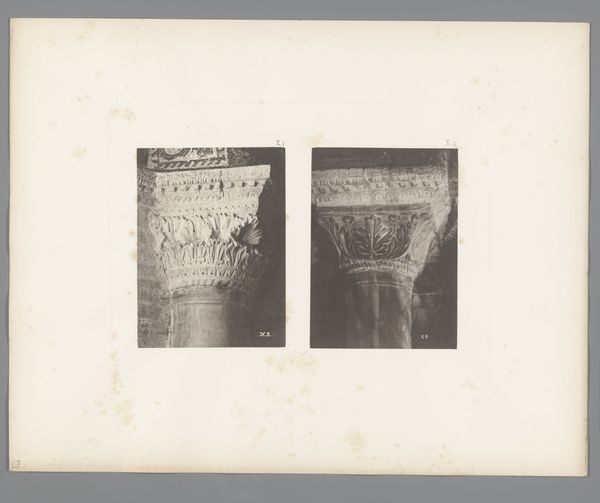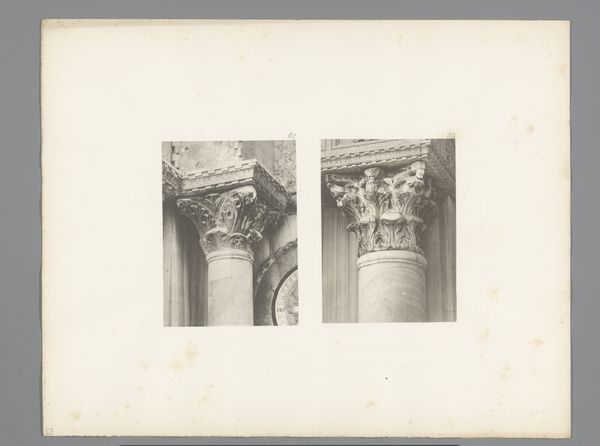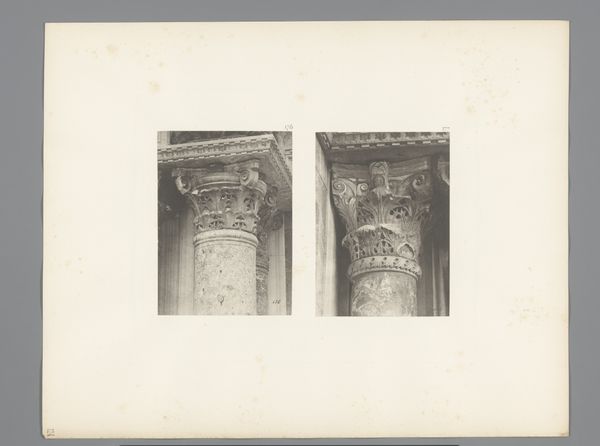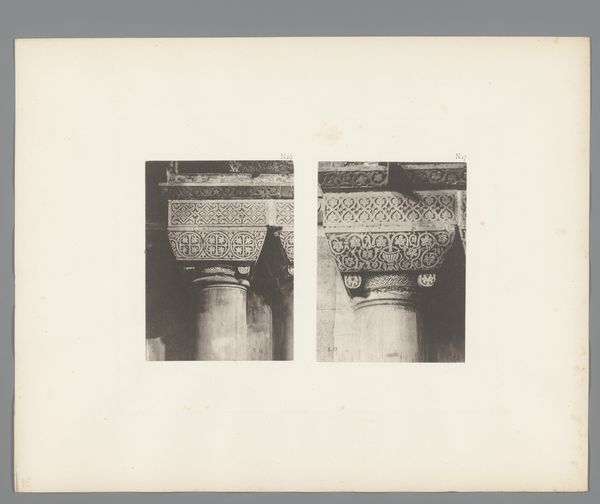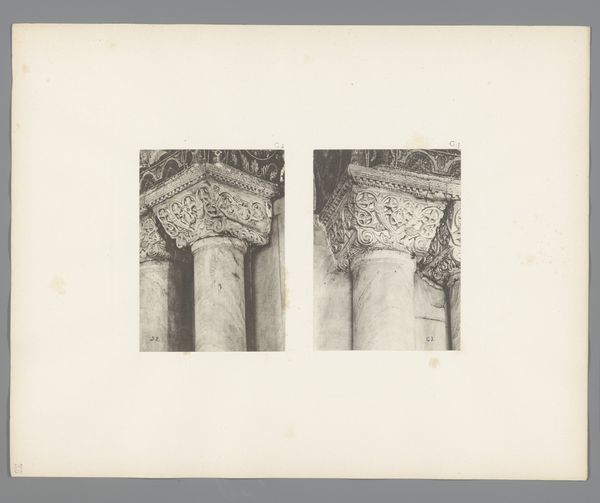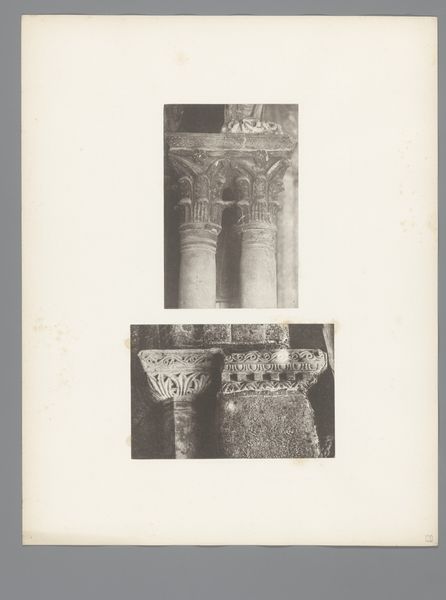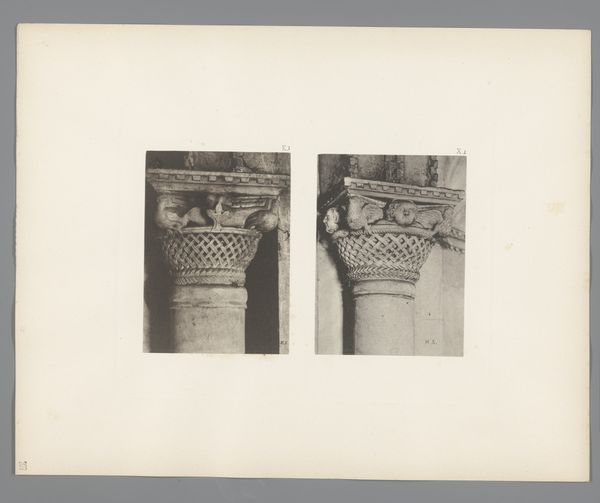
print, photography, gelatin-silver-print
# print
#
landscape
#
photography
#
ancient-mediterranean
#
gelatin-silver-print
Dimensions: height 311 mm, width 394 mm
Copyright: Rijks Museum: Open Domain
Curator: These photographic prints by Carl Heinrich Jacobi, titled "Twee afbeeldingen van kapitelen van de San Marco in Venetië," capture the detailed capitals of St. Mark's Basilica before 1885. They are presented as gelatin-silver prints. What strikes you first? Editor: The sense of weight. Those capitals look incredibly heavy, bearing the burden of centuries, really. The crisp detail achieved in this photographic medium is stunning; I'm struck by how this technique manages to convey a clear and captivating architectural subject. Curator: Indeed. Focusing on process, the gelatin-silver print method would've required meticulous preparation of the photographic plates, a delicate chemical balance to achieve this tonal range and sharpness. These are more than just documentations; they reflect the craftsman's understanding of both material and subject. Consider also, the societal aspect - photography here becomes a means to disseminate architectural marvels to a wider audience. Editor: Agreed, though I’m also pulled into the symbolic language chiseled into the stone. The vegetative motifs on the left appear almost classical in derivation, evoking abundance and perhaps renewal, a visual hymn to the power and wealth flowing through Venice at that time. The other column seems populated with beastly figures. Curator: Let’s not disregard the functionality, though. These capitals, while ornate, primarily distribute weight from the arches and vaults above. Each carved detail wasn’t merely aesthetic; it was structurally integrated. Think of the labor involved in quarrying, transporting, carving – all integral to understanding the image itself. And the consumption...the desire of patricians and foreign eyes alike for pieces of Italian glamour made the replication and export of these types of forms so common. Editor: Good point about replication! We are looking at a copy of something too. But I still find it hard not to dwell on the visual vocabulary used here; these sculptures also embody the narratives and belief systems that once held immense cultural sway. Seeing the animalistic depictions mixed with the vegetative in early Byzantine art gives them powerful meanings relating to protection and the cosmos. Curator: So, the conversation moves from the ground, the Basilica as a material entity—to a focus skyward? I find myself again anchored by the gelatin print itself, its production, a bridge of its own from Jacobi's time, connecting his present, with a world ever becoming further removed. Editor: Yes, and it allows the Basilica's rich language of sculptural meanings and Jacobi's craft to live together across those vast gulfs of time. Thank you for lending your unique perspective!
Comments
No comments
Be the first to comment and join the conversation on the ultimate creative platform.
